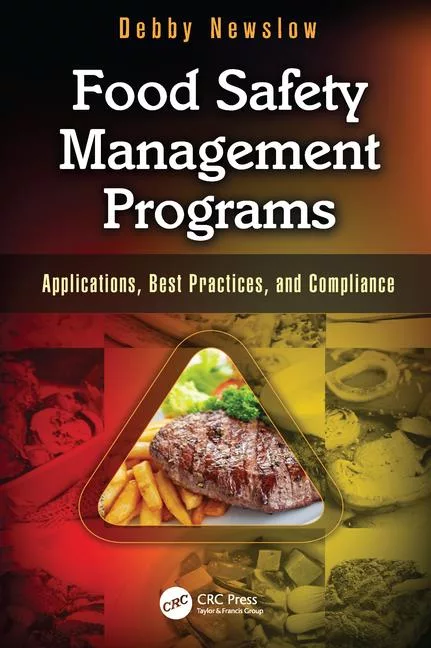A State Perspective on National Uniformity, Federal Oversight and the Impact of International Trade on State Programs and Food Safety
The history of food safety in the U.S. is based in part on the development of a virtual mishmash of laws and regulations enacted by state legislatures, through the process of “initiative and referendum,” and by state agency rulemaking. Although many of these regulations are very important in the protection of public health, there currently is no uniform system in place to ensure that all citizens are protected to the same degree. In addition, there is no adequate oversight mechanism to ensure that regulations and enforcement applied to contract and partnership inspections by the states are equivalent to federal inspections. Consequently, our trading partners may not accept these inspections as equivalent, thereby putting our own industries at risk.
This article will examine national uniformity and the current lack of uniformity among the states; voids in federal regulations and the impact of nonuniform laws and regulations on industry and our trading partners; national legislation intended to create a set of uniform food safety and labeling regulations; and federal oversight of state food safety programs to ensure equivalence.
A Brief Historical Look at "National Uniformity"
I have been an active member of the Association of Food and Drug Officials (AFDO), an organization founded in 1896 by Harvey W. Wiley, the “father” of food and drug law in the U.S., for more than 20 years. AFDO is composed of regulatory officials from the 50 states, local jurisdictions, federal regulators from the U.S. and Canada, and non-voting members from regulated industry. AFDO’s motto, at least as far back as I can remember, has always been “uniformity through communication and cooperation,” as opposed to preemption. Early on it became quite evident that the word “preemption” as a means of obtaining national uniformity in the area of food regulation was supposed to be abhorrent to me as a state regulatory official.
During the 1990s, national uniformity legislation was periodically introduced in Congress, but such legislation never generated enough support to make it out of committee. Individual states, through their congressional delegations, expressed enough opposition to effectively kill the bills. After all, we strongly believed that the states and local jurisdictions are the first line of defense against emerging food safety problems in the U.S., and such legislation would have unduly tied our hands with respect to our ability to react swiftly to these problems. Further, there was no mechanism within the legislation as initially proposed to petition the federal government for an exemption based upon a local or state need or for a national standard.
In 1996, a food industry association approached the AFDO Board of Directors in an effort to determine precisely what the state objections were to national uniformity legislation. The initial versions put forth by industry were not very satisfactory in addressing state needs, and in 1997, the AFDO Board adopted a position paper on “National uniformity for Foods, Drugs, and Cosmetics.” This statement outlined AFDO’s support for national uniformity and presented the association’s general position on the issue. During the next three years dialogue between AFDO and the industry continued, with AFDO becoming more specific with respect to comments on a 1999 version of the legislation, referred to as S. 1155.
Then, on June 29, 2000, a substitute S. 1155 was introduced in the Senate Committee on Agriculture and Forestries and passed with unanimous support of the members present and voting, including both Democratic and Republican committee members. Among the major revisions made to the original S. 1155 was a new twist on the petitioning process, which would require the U.S. Food and Drug Administration (FDA) to “take all administrative steps” in the review of state petitions, including petitions for a local need exemption, for a new national standard, or for those regarding an imminent health hazard. Further, the legislation would ensure that the state regulation remained in effect until FDA takes “final action.” If FDA failed to do so within the time frames specified, anyone objecting to the state regulation would have to petition the federal courts to require FDA to act on the petition. In this manner, the so-called “hard hammer” on the states was removed. Additional revisions were also made in the Senate Committee substitute, such as exempting “sanitation” issues, including shellfish warnings and consumer advisories found in the 1999 version of FDA’s Food Code, a document used by FDA and the states to obtain uniformity in the regulation of foods prepared and sold at retail.
Although Substitute S. 1155 still requires the onerous petitioning process, significant revisions with respect to many of the states’ previous concerns made it somewhat more palatable than its predecessors. The AFDO Board therefore initially decided to remain neutral with respect to this bill, but has since expressed some continuing state concerns.
State Views on National Uniformity
As I previously indicated, in 1997 the AFDO Board adopted a position statement that clearly articulates its strong support for national uniformity. The document also articulates AFDO’s opposition to subordination of the states’ fundamental obligation to act to protect public health in the absence of clear national standards. In other words, unless or until there are national standards that address all aspects of food safety covered by state regulations (which would set the bar high enough to enable the states to continue to protect public health as they have done for more than 200 years), states should be permitted to provide a level of safety greater than that provided by current national regulations.
There are many food safety and labeling issues that are still unresolved at the national level. Although the most prominent of these issues today is biotechnology, many others also come to mind. These include the safety and labeling of ephedrine containing supplements, aflatoxin and fumonisin contamination of grains and other foods, mercury levels in fish, refrigeration temperatures for smoked fish, refrigeration labeling for potentially hazardous foods, source declaration for bottled water products, and so on. Although the proposed legislation leaves in effect regulations dealing with food contamination and adulteration for which FDA has not adopted regulations through “notice and comment” (i.e., compliance policy guides and similar documents are not preemptive), it is clear that these issues should be addressed in the form of national regulations.
As a state regulatory official for the past 28 years who has attempted to stay abreast of both national and international issues, the concept of preemption as it relates to national uniformity has perhaps become a bit more palatable to me personally. There are many good food safety-related regulations out there among the states, and the only way we are going to raise the national standard to this level is by creating some mechanism through which this will occur. I am not advocating support for S. 1155 as the only means of achieving this, but at the same time no other solution has been offered.
Today we live in a global economy in which almost half of the food we consume comes from other nations. We desperately need a universal system upon which we can rely to ensure that all foods meet certain food safety standards, that labeling for foods is the least burdensome as possible for industry and that also conveys the information consumers require to make educated choices, but which limits such labeling to food safety and nutrition. We have all been quick to criticize the systems used by other countries, often demanding that they meet our standards, and we are quick to criticize their methods of assuring food safety, or lack thereof. We have done all of this, however, without giving much thought to the fact that in the U.S. we have no less than 50 different sets of laws and regulations in addition to those of our federal counterparts.
Federal Oversight of State Food Safety Programs
For the past 28 years FDA has engaged in food inspection contracts with the states. In 1992, following a meeting in Atlanta, GA, between FDA officials and representatives of AFDO, a “white paper” was prepared that advocated expansion of leveraging opportunities between the states and FDA. This developed into the approximately 165 partnership and work- share agreements between the states and FDA that exist today.
During the first 15 years or so, FDA conducted audit inspections of state contract inspections at a rate of about 10 percent. Partnership inspections were not audited because it was assumed that FDA would not have entered into the partnerships without evidence that the state inspections were equivalent. However, in 1972 FDA had almost 300 more personnel in its field offices than it has today. With the impact of the increase in regulatory oversight of the drug, medical device and biologics industries on FDA staffing, there obviously has been a great reduction in the numbers of FDA field staff dedicated primarily to food safety. FDA is currently addressing this issue through increased hiring as the budget permits.
Two years ago, FDA asked the Office of the Inspector General (OIG) to conduct an in-depth review of agency’s oversight of state programs. The final report, entitled FDA Oversight of State Food Safety Programs, was issued on June 14, 2000. The report indicates an overall lack of oversight of state inspections by FDA and makes a number of recommendations for improved oversight, including joint audit inspections, specific training for federal and state auditors, and audits over a three- year period of all state investigators who engaged in contract and partnership inspections. Our inspection program in Texas was one of the three state programs visited by 01G. As the president of AFDO at the time, I submitted a seven- page response to the OIG based upon comments from the AFDO Board. Among these comments was AFDO’s frill support for adequate oversight of state programs to document that many states are enforcing model regulations in an equivalent manner, or to document where remedial or significant program issues still need to be addressed.
I bring up the issue of FDA oversight because I am firmly convinced that failure on our part to ensure equivalency among state and federal inspection programs may well lead to a major problem with the issue of equivalency among our international trading partners. As I have previously stated, we continue to criticize either the level of food safety afforded by our trading partners for foods we import or their inspection procedures, while at the same time ignoring the fact that we cannot provide them with assurances that our own inspections are equivalent. I am convinced that, without documented assurance that state inspection programs are equivalent to those of FDA, sooner or later the European Union (EU), Japan or some other trading partner will refuse to accept the results of our state inspections and therefore prohibit the exportation of many American-grown and processed foods to their countries. As a matter of fact, they could probably take such action today.
Having specifically requested the OIG study, FDA is taking a proactive view of the report and has already taken steps to improve oversight of state inspections and programs. At the AFDO Annual Education Conference, held in June, FDA Associate Commissioner for Regulatory Affairs Dennis Baker advised that FDA has already scheduled training for their oversight investigators, is improving the “institutional knowledge” of its field staff, and is preparing to audit all state inspectors engaged in contract and partnership inspections beginning this year and carrying through 2002. FDA is also piloting the Field Accomplishment and Compliance Tracking System (FACTS) with two states to ensure that a valid method exists to capture the inspectional work and findings from state inspections and to add an additional means of ensuring that the inspections are equivalent.
Factors for State Programs and International Trade
Certainly, improved FDA oversight of state food inspection programs to document equivalency can and will affect our relationships with our international trading partners. As I have stated, lack of documentation that state contract and partnership inspections are equivalent to those of FDA is worrisome to the EU and others. Our own industries also demand that state inspections are equivalent and are conducted using the same criteria used by our federal counterparts. The last thing neither we nor our regulated industries want to see is an inability to export food products.
Even my own Texas Department of Health is undergoing formal regulatory review to improve our regulatory programs, based upon recommendations from the Texas Sunset Commission last year. This includes our laws, regulations, the way we conduct inspections, the manner in which we develop and adopt new or amended regulations, and whether or not our current regulations are still adequate or obsolete. We are approaching this proactively by asking for industry’s assessment of our laws, inspection abilities and activities. This process can serve to assist FDA in its oversight of state programs, and bring us closer to the concept of national uniformity, at least within our own state.
Further, the National Food Safety System (NFSS) Project, composed of five national work groups, is assisting the states and the federal agencies in this process. The Roles and Responsibilities Work Group has developed a draft template for a federal oversight and audit tool, which FDA is currently reviewing. Also, since training is an integral part of promoting uniformity and capacity, the same work group has developed an outline for a “virtual food safety university,” which should bring together all of the federal agencies involved in food safety, the industry and the states for development and collation of food safety training in all of the various modalities. In addition, the National Uniform Standards Workgroup is identifying various aspects of a model state food safety program, including uniform laws and regulations, which should be required for states to conduct inspections of six different types of food commodities. These include food manufacturing, milk and dairy, seafood, fresh produce, meat and poultry, and retail. If developed to fruition, each of these activities will have a profound impact on the states and our federal counterparts, as well as providing additional assurances to industry and to our trading partners that we are serious about uniformity and equivalence within our own country.
I should also mention that the last draft of the President’s Council on Food Safety’s Strategic Plan, which was scheduled for presentation in final form to President Clinton by the end of July, included a statement indicating that federal agencies should examine state standards to determine whether such standards should be national standards. The Steering Committee of the NFSS Project has encouraged the federal task force developing the strategic plan to promote the activities of the NFSS work groups within the President’s Council on Food Safety’s plan, and to ensure that the roles of state and local food safety programs are adequately addressed in this national plan.
Although initial public discussions of the first draft of the Strategic Plan in July of 1999 indicated a need to make adjustments to include international trade (import) issues, the January 2000 draft and discussions at the January 19 public meeting indicated that the Strategic Plan would only address domestic food safety issues. Be that as it may, the fact that the Draft Plan mentioned federal oversight, partnerships with the states and uniformity make it clear that the document will in fact affect our dealings with international trading partners. The plan is an effort to improve food safety from farm to table, and as such, any impact the plan may have on domestic food safety will certainly affect both imports and exports.
State Programs and Food Safety
If we were to examine the laws and regulations that currently exist at the state level—and in some instances, at the local level—we would find a mishmash of regulations, both protectionist laws and very good laws and rules. In states that have strong industries such as the dairy, citrus and cattle industries, you will find that these enterprises are well protected, and in some cases, insulated, from competition. ‘Whether we are talking about standards for milk solids, standards for the quality of citrus juices, or the so-called produce and cattle disparagement laws (“Don’t you dare criticize my cucumber!”), such laws and the rules developed to enforce them can be a mixture of the good and bad.
There are also states that have established contaminant levels that either vary from those in use by FDA or that actually fill a void where FDA is silent. We have laws that were enacted by either public referendum, such as Proposition 65 in California, or that were enacted as a result of either some real or perceived need by state legislatures. We also have laws and/or proposed legislation that are so obviously wrong, such as the New Jersey bill to ban the sale of irradiated foods for the next five years, that they make National Uniformity (with capital letters) seem absolutely the only solution.
Irrespective of your personal view of many of these state laws and regulations as a whole, there are some very good ones in existence. Many were created as a response to serious public health concerns. Many are flexible so that they permit states to react swiftly to a public health crisis, such as the ethylene dibromide (EDB) situation in 1984 when a number of states either set a zero or one part per million (ppm) tolerance. This was an excellent example of how our rulemaking structures often enable the states to react much more quickly than our national agencies, thus protecting the public much faster by saving lives and/or preventing additional illnesses. The states are active, aggressive partners in regulation and surveillance.
Having said this, I must add that not all states have adopted the AFDO Model Food, Drug, and Cosmetic Act. Not all states enforce federal requirements on pesticides, bottled water, food additives, or even food labeling. So far, less than half the states have adopted the FDA Food Code for the uniform regulation of retail food establishments.
Therefore, we continue to have a food safety system in the U.S. that makes our foreign trading partners cringe, as do our own industries to a lesser degree. To resurrect an old cliché, we may indeed have the safest food supply in the world, but in one state it may be safer than in another, or at least have the appearance of being so. And this has been done with a significant cost to our industries, according to figures produced by the Grocery Manufacturers of America, the National Food Processors Association and the Food Marketing Institute, each of which has conducted studies on this issue.
If we are to expect Codex Alimentarius or the World Trade Organization to work the way they are intended to work, without having to cede to the rest of the world the level of food safety we as U.S. consumers expect, we must do whatever is necessary to create and live by uniform standards within our own borders. Uniformity does not mean the lowest common denominator. The states have a lot to add to the level of food safety throughout the U.S., but the mishmash that currently exists will only benefit us in the future if the best of these laws and regulations are lifted to a higher plane.
Within the EU, the European Commission (EC) has the responsibility for auditing the member states to see how effective those individual countries have been in implementing the directives of the Council of the European Communities. If the audits done by the EC with respect to Hazard Analysis & Critical Control Points (HACCP) implementation are an example, the EU is way behind the U.S. food industry in the implementation of this food safety system, whether we’re speaking of mandated (seafood, meat and poultry) or voluntary HACCP. According to the Commission's latest report, “So far, the control authorities (within the Member States) do not in generally appear to be penalizing firms for failing to implement the HACCP system.” Again, I mention this because we continue to criticize our trading partners for failure to implement equivalent food safety systems, while we continue to support nonuniformity within our own communities.
Organizations such as AFDO, the NFSS Work Groups and our federal counterparts, working closely with the states, need to conduct a complete review of the food safety laws and standards that currently exist among the states, and without undue influence by Congress and lobbyists, raise those deemed worthwhile to the national level. States, on the other hand, need to do a complete review of their laws and regulations to determine what improves food safety and what does not. State legislatures need to do their homework before enacting silly or protectionist legislation, determining first if the nature of the problem is local or national, then ensure that there is a real public need for an additional level of protection from a public health standpoint. State regulatory officials need to work with regulated industry and consumer advocates to reach common ground before attempting to issue new regulations. In addition, all need to have scientific justification for additional regulations. Such justification is necessary for us to maintain our high standards of food safety in the U.S. in the face of the Sanitary and Phytosanitary (SPS) Agreement under the WTO, or we risk losing out internationally. Further, individual agreements under the SPS are based upon a finding that the exporting country’s requirements are equivalent.
AFDO has worked diligently these past few years to create a more uniform regulatory system in the U.S., despite many barriers. Three years ago, AFDO developed a blueprint for a National Integrated Food Safety System in the U.S., outlining the roles and responsibilities of the various agencies, federal, state and local. AFDO has worked closely this past year with both FDA and the Food Safety Inspection Service (FSIS) to develop a uniform method of addressing recalls. Many AFDO members are active members of the NFSS National Work Groups, which are assisting the federal agencies in areas such as training, oversight, uniform regulations, uniform laboratory accreditation and communications. But much more needs to be accomplished. Most of these are ideas and concepts, and as we all know, until they are put into practice nothing has really been accomplished.
In conclusion, we must be diligent. We must not let the progress that has been made become lost because of distrust or infighting among federal agencies, states, industry or consumer advocates. Uniformity and equivalence are necessary if we are to make any progress in the area of food safety in the U.S. or under international agreements. We must all have the will to do what is right for public health in this country and abroad, and see it to fruition. This will take time, money and dedication. So let’s get on with it.
Robert D. “Dan” Sowards is Director, Manufactured Foods Division of the Texas Department of Health, where he has worked for 27 years. The Manufactured Foods Division, which has been recognized by FDA as one of the best state programs in the U.S., oversees the inspection of more than 9,000 food and supplement manufacturers, 2,600 wholesale food distributors, 4,000 water vending operations and 175 food salvage establishments. Currently, he is president of the 104-year-old Association of Food and Drug Officials. He first presented these comments at the Second NSF International Conference on Food Safety, Savannah, GA, Oct. 11, 2000.
Looking for quick answers on food safety topics?
Try Ask FSM, our new smart AI search tool.
Ask FSM →








